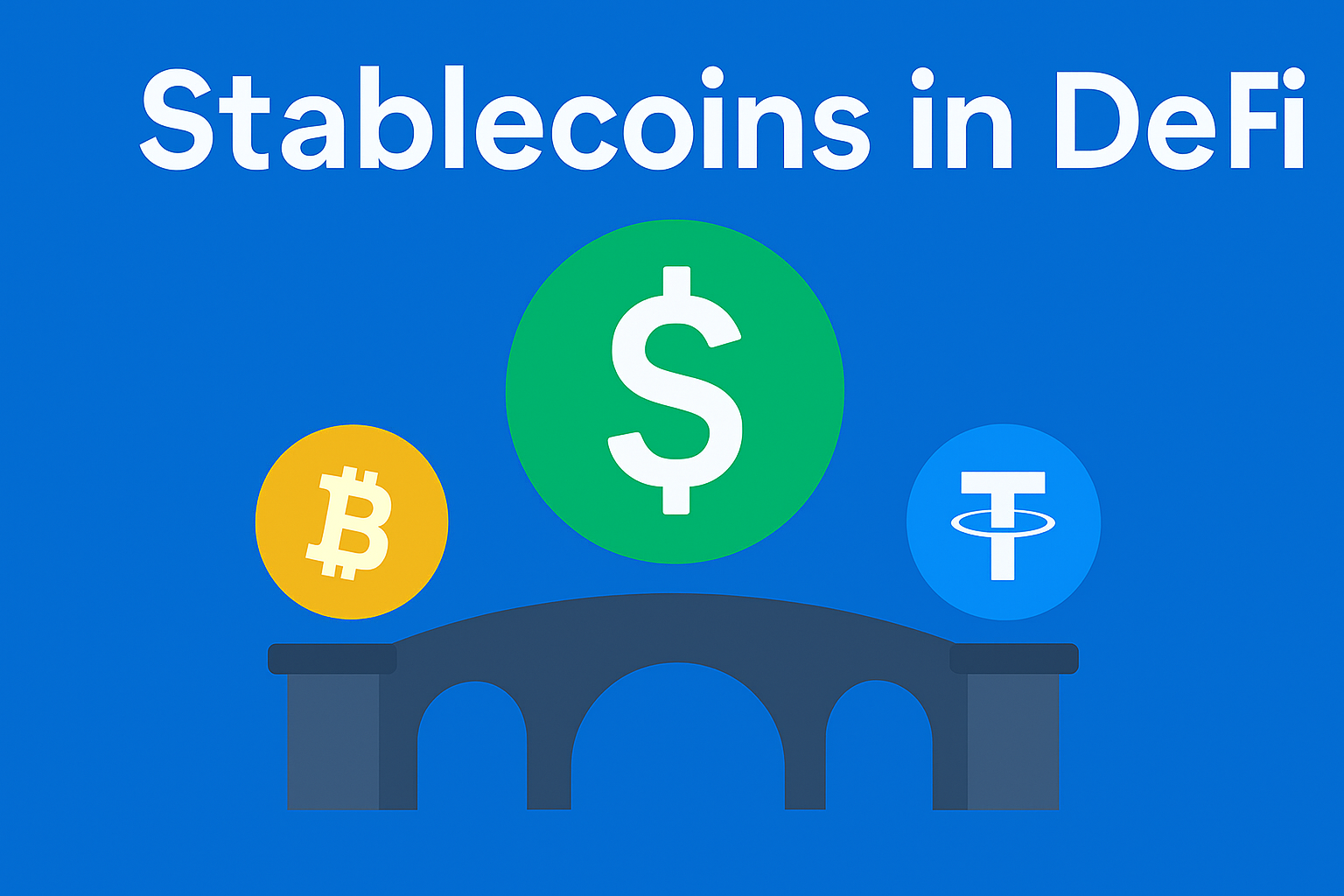When people first hear about cryptocurrencies, they often imagine dramatic price swings. Bitcoin jumping up thousands in a day or altcoins losing half their value overnight. While volatility creates opportunities, it also makes crypto risky to use for everyday transactions or as a safe store of value. That’s where stablecoins come in.
Stablecoins are a vital building block of Decentralised Finance (DeFi). They combine the benefits of blockchain technology with the stability of traditional currencies, making them essential for trading, lending, and saving in the crypto economy.
What Are Stablecoins?
Stablecoins are cryptocurrencies designed to maintain a steady value, usually pegged to a fiat currency like the US Dollar, Euro, or Pound. For example, 1 USDT (Tether) or 1 USDC (USD Coin) aims to always equal $1 USD.
They provide stability in a market known for its volatility, allowing investors and DeFi users to move money in and out of risky assets without leaving the blockchain ecosystem.
Types of Stablecoins in DeFi
-
Fiat-Collateralized Stablecoins
-
Backed by reserves of fiat currency or equivalent assets.
-
Example: USDC, USDT
-
Pros: Stable, widely accepted, highly liquid.
-
Cons: Centralized (reliant on issuers and regulators).
-
-
Crypto-Collateralized Stablecoins
-
Backed by other cryptocurrencies, usually locked in smart contracts.
-
Example: DAI (from MakerDAO)
-
Pros: Decentralized, transparent.
-
Cons: Can become under-collateralized during market crashes, leading to liquidations.
-
-
Algorithmic Stablecoins
-
Use smart contract algorithms to balance supply and demand to keep the peg.
-
Example: FRAX, USDe
-
Pros: Capital-efficient, innovative.
-
Cons: Risky — some have failed dramatically in the past. E.g. Terra Luna’s UST
-
Why Are Stablecoins Important in DeFi?
-
Trading & Hedging: Investors can quickly move between volatile tokens and stablecoins to lock in profits or avoid losses.
-
Lending & Borrowing: Stablecoins make it possible to take out or provide loans in DeFi without exposure to wild price swings.
-
Payments & Remittances: Sending stablecoins across borders is faster and cheaper than using banks.
-
Yield Generation: Users can stake or lend stablecoins in DeFi protocols to earn passive income.
Risks of Stablecoins
While stablecoins add safety, they’re not risk-free:
-
Centralization Risk: Fiat-backed coins rely on companies and regulators.
-
Depegging: Market shocks can cause a stablecoin to lose its peg (e.g., Terra UST collapse).
-
Regulatory Uncertainty: Governments are still figuring out how to regulate stablecoins, which could impact adoption.
Final Thoughts
Stablecoins are the glue holding DeFi together. Without them, trading, lending, and borrowing would be much riskier and less efficient. As DeFi grows, stablecoins will remain at the heart of the ecosystem, providing both liquidity and stability.
But it’s essential to choose stablecoins wisely, understand their risks, and diversify where possible. In DeFi, even “stable” doesn’t mean risk-free.

